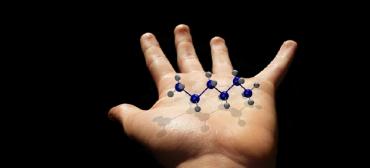Robotic Cardiac Surgery
(Robotic-assisted Cardiac Surgery, Robotic Heart Surgery, da Vinci Surgery)
Procedure overview
Robotic cardiac surgery is a form of heart surgery performed through very small incisions in the chest. With the use of tiny instruments and robotic devices, surgeons are able to perform several types of heart surgery in a way that is much less invasive than other types of heart surgery. The procedure is sometimes called da Vinci surgery because that is the name of the manufacturer of the robot often used for this procedure.
Robotic surgeries have been used for a number of different heart-related procedures, including valve surgery, coronary artery bypass, cardiac tissue ablation, heart defect repair, and tumor removal.
Reasons for the procedure
The main advantage of robotic cardiac surgery is that the procedure is minimally invasive compared with other forms of heart surgery. Smaller incisions mean that you can heal faster and return to activities more quickly.
Your doctor may recommend robotic cardiac surgery if you need an artery bypass procedure to improve blood flow to the heart and reduce chest pain. Your doctor may also use robotic cardiac surgery to:
-
Repair or replace stiff or leaky heart valves to improve their function
-
Correct atrial fibrillation, a common type of arrhythmia
-
Remove a tumor in the heart
-
Treat congenital heart conditions
Your doctor may have other reasons to recommend robotic cardiac surgery.
Risks of the procedure
One of the main advantages of robotic cardiac surgery is that it minimizes many of the risks related to major heart surgery. The doctor does not have to cut through the breastbone to open your chest, so many of the complications involved with such a major surgery are eliminated.
Robotic cardiac surgery still requires anesthesia before the procedure and, as with any kind of surgery, there are always risks involved, including:
-
Heart attack
-
Stroke
-
Infection
-
Death
There may be other risks, depending on your specific medical condition. Be sure to discuss any concerns with your doctor before the procedure.
Before the procedure
As with any surgical procedure, your doctor will do a full assessment of your health to make sure you are a good candidate for robotic heart surgery. Factors including your age, medical history, and lifestyle, as well as the overall severity of the disease, will determine whether you are a good candidate for the procedure.
During the procedure
The following is the general sequence of events that will most likely occur during robotic cardiac surgery:
-
You will be placed under general anesthesia for the surgical procedure.
-
A surgeon will make a series of keyhole-sized incisions on the side of your chest. These incisions will align with the openings between your ribs.
-
Depending on the procedure being performed, several precision-guided robotic arms will be inserted into these incisions.
-
These robotic arms hold and manipulate tiny instruments in order to perform the required tasks on the heart or surrounding arteries.
-
A tiny video camera will be inserted into another incision to provide a magnified, three-dimensional image of the operating site.
-
The surgeon will control the robotic arms and camera from a special console located within the operating room.
-
On completion of surgery, the surgeon will remove the instruments and close the incisions.
After the procedure
Once the robotic cardiac surgery is complete, you will be moved to the recovery area to be monitored. You can expect a relatively short hospital stay to follow, usually half as long as that following conventional open heart surgery. Your doctors will typically discharge you once your pain is under control, you can retain liquids without nausea and vomiting, and you pass a number of lab tests.
The less invasive nature of robotic cardiac surgery also means that you can expect less scarring on your chest. Conventional heart surgery leaves a 10-inch scar on your chest. Robotic cardiac surgery just leaves a handful of smaller scars on the side of your chest.
Postsurgical pain also tends to go away much faster than with traditional procedures. After being discharged from the hospital, most patients can manage their pain with over-the-counter pain relievers like acetaminophen (Tylenol) or ibuprofen (Advil, Motrin).
You may also return to normal activities more quickly than you would after a conventional heart surgery. Most people can resume their normal activities after three weeks. Specific recommendations for activity will be provided by your doctor.
Your doctor will typically schedule follow-up appointments after the procedure to check your progress. Be sure to notify your doctor immediately if any symptoms occur after the procedure, such as chest pain or discomfort. Complications are rare after robotic heart surgery, but possible, so it is important to carefully monitor for any symptoms and report them to your doctor.
Related Questions
Mantoux Test Query
- 3853 Days ago
- Tests & Procedures
My Rheumatoid Factor is - H 74 IU/mL
- 4012 Days ago
- Tests & Procedures
Suffering from piles
- 4133 Days ago
- Tests & Procedures
widal positive
- 4247 Days ago
- Tests & Procedures
Whitish viscosity
- 4256 Days ago
- Tests & Procedures
LINAC procudure, 3DRT and IMRT
- 4270 Days ago
- Tests & Procedures
Ecg of heart showed T wave changes
- 4311 Days ago
- Tests & Procedures
CT Coronary Angiography
- 4295 Days ago
- Tests & Procedures





















